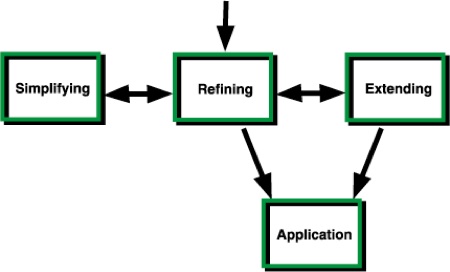scope and sequence

SCOPE
The unit plan involves four lessons focusing on territory and invasion game appreciation supplemented by skill development. A sequence of modified games are identified, progressing towards traditional basketball. The unit is dynamic and can be implemented independently, as part of a territory and invasion sequence or tailored to expand for your teaching needs.
The Australian New South Wales Board of Studies Outcome requirements for Personal Development, Health and Physical Education (PD/H/PE) are linked to this unit. Outcomes are specific to stage 4 and associated with Strand 2: Movement Skill and Performance. Major Outcomes and Minor Outcomes provide the foundations of the unit and legitimize the teaching practices outlined.
SEQUENCE
The four lessons are dictated by tactical problems which ultimately progress toward traditional basketball. Off- the- ball movement and on- the- ball skills are developed in a variety of dynamic contexts. The transfer of skills throughout the modified games becomes gradually significant as students tactical awareness flourishes, skills are refined and achievable challenges are presented.
“Teaching games is a progressive sequence of tasks designed to develop learners' abilities to play games skillfully. A teacher should plan a basic task noting how he or she will teach students of different abilities. A basic task should offer students a body action within an area with equipment/objects and/or partner at a level of quality, i.e. "Selecting a ball of your choice, show me how you can keep a ball in the air with your hand after one bounce within an area that does not interfere with anyone else." Once action is elicited from the learners, the teacher observes to decide whether to give group or individual feedback, or the redesign the task better for the needs of the learners. The cycle of skill development is highlighted in the diagram below.” (Hopper, 2009)
“Refining implies developing what the students can already do. Using skill cues the teacher offers (1) pointers to improve skill performance, (2) feedback as students try task, or (3) demonstration of a student/teacher doing the task effectively. Refinements can be what the body does to perform the skill (i.e. "bend your knees to get below the ball"), where in space to do the task effectively (i.e. "Send the ball higher for more time"), how to apply force effort from the body on an object (i.e. "keep the hand firm and flat"), and in relation to an object or a partner (i.e. "get to where the ball will go after it lands"). As you drag the cursor over the Basic Task model the refining process is indicated.
In addition, the environment in which the task is performed can be extended by the teacher or in time by the student in order to make the task more challenging (i.e. ""See if you keep the ball going using a bat"), or simplified in order to make the task easier (i.e. "Can your keep the ball going longer with a larger ball?"). There are multiple ways of modifying a task as indicated in the diagram.
The key idea is that the refining tasks and extending tasks should feed into an application task that is more like an adult game. This game should draw on the skills being developed by the previous tasks. For example, "Working with a partner invent a game where you score by keeping the ball up in the air after one bounce." (Hopper, 2009)
